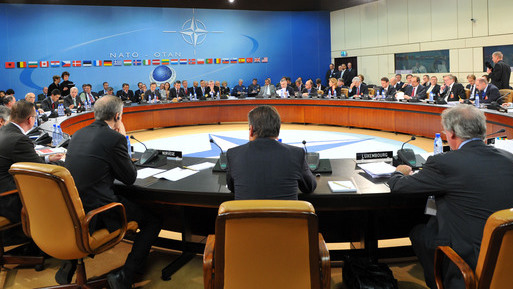U.S. Secretary of Defense Leon Panetta and Secretary of State Hillary Clinton have an opportunity this weekend as they address the Munich Security Conference to suggest ways to stabilize NATO’s ailing defense capabilities.
European nations have slashed their defense budgets to record low levels without much regard for NATO’s overall defense requirements. And last week the United States announced that it would remove two of its four Brigade Combat Teams from Europe.
Those European reductions are beginning to weaken NATO’s core military capabilities. Most European defense cuts have been across the board, creating the potential for hollow forces with low readiness and low sustainability levels. More recently key allies like the British and Dutch have eliminated entire military categories such as carrier aviation and armor.
The alliance is certainly not doomed. In 2011, Europe still had two million personnel under arms and spent about €215 billion on defense; those numbers are declining. NATO emerged victorious in Libya without losing a man; and maritime operations are having a positive impact against pirates and terrorists. The Afghanistan coalition was shaken recently with France’s decision to withdraw early, but NATO Secretary General Anders Fogh Rasmussen has since said that the United States and its allies would step back from a combat role in Afghanistan in mid-2013.
The real long-term risk to NATO is that gaps will appear in the European force structure that the United States won’t be able to fill, and that the alliance will be unable to act in a future crisis. That risk needs to be faced squarely at the NATO summit in Chicago in May.
Panetta and Clinton might consider a five-part plan to deal with this looming problem. First, NATO needs to define more precisely what military capabilities are needed to meet its three agreed tasks: collective defense, crisis management and cooperative security. NATO’s Allied Command Transformation has been unable to design such a “must have” priority list.
The U.S. National Defense University has just completed a major study on this which might serve as a starting point for prioritization. Skilled military personnel, technology and deployable capability are more important than massed armies and large installations.
Ideally, at the Chicago summit, heads of state would pledge that as they consider their national defense budgets, they would protect these “must have” military capabilities. They might also pledge to build back beyond this minimal requirement after the economic recession has passed.
Second, NATO must take a bolder approach to Rasmussen’s concept of Smart Defense. The alliance has identified some 16 current multinational defense projects where military assets are pooled or shared by several nations. That is a good start, but it will not deal with the magnitude of this crisis. The level of specialization and cooperation needs to be raised to the mission level in order to maximize efficiency and political attractiveness. Clusters of willing nations might form what has been called “mission focus groups” that prepare for certain types of missions, such as fighting piracy, policing the air and special operations. Those nations would self-organize under the general guidance of the NATO secretary general. Rewiring the alliance around a mission focus group concept may be a bridge too far for Chicago, but the concept should considered there.
Third, the United States European Command, Eucom, needs reorientation. During the past decade, U.S. forces in Europe have followed a “lily pad” strategy by which they sit waiting to jump to another theater. Given the nature of NATO’s coming capabilities crisis and U.S. reductions, Eucom needs to work more closely with its European allies to maintain European skills and trans-Atlantic interoperability.
A recent American decision to dedicate a U.S. based Brigade Combat Team to work with the NATO Response Force is precisely the kind of close U.S.-European military interaction that is needed.
Fourth, NATO’s partners need to play enhanced roles and even consider dividing some of the labor with NATO. For example, the European Union might agree to take the lead on certain missions, such as peacekeeping in Africa. Russia might form a close cooperative arrangement with NATO on counterterrorism. Historically non-aligned European nations like Sweden and Finland might integrate even more with NATO for missions like Baltic defense. The most capable partners can be closely associated with Smart Defense efforts and take a leadership role in training and education.
Finally, to reassure our Eastern allies, NATO needs to exercise its contingency plans for so-called Article 5 missions using U.S.-based forces and to retain its current nuclear posture in Europe. With NATO’s conventional capabilities in decline, this is no time to remove the remaining handful of U.S. nuclear bombs in Europe that both reassure allies and deter potential adversaries. Any future nuclear reductions need to be part of a broad negotiation with Russia.
NATO must keep up its guard even in times of austerity. It may also need to lower its level of ambition and focus on priority missions. These five measures can maximize military efficiencies and maintain basic confidence that the Alliance will be able to deal with the uncertain challenges that lie ahead.
Hans Binnendijk is vice president for Research and Applied Learning at the National Defense University, and member of the Atlantic Council’s Strategic Advisors Group. These views are his own and do not necessarily represent those of the U.S. government. This essay originally appeared on The New York Times.
Image: nato%204%2019%2010aa.jpg
